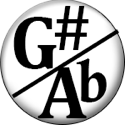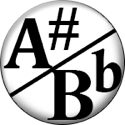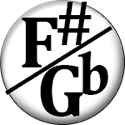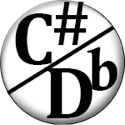Play a “Sliding 9th Chord” Blues
The sliding 9th chord is an interesting decoration to add to the blues, especially for a slower, more laid-back blues.
It all starts with a blues using dominant 9th chords: I9, IV9, and V9.
Then, you let each chord slide briefly up a whole step and back down. So the in a C blues, the C9 will slide up to D9 and come back down.
To simplify this, you can just slide the top few notes up and down. That would be a minor triad built on the fifth of each chord.
| Chord Type | C9 | F9 | G9 |
| 9th chord | C E G B♭ D | F A C E♭ G | G B D F A |
| Minor chord on 5th | Gmin (G B♭ D) | Cmin (C E♭ G) | Dmin (D F A) |
So in the key of C we'd have a G minor, C minor and D minor. Each will slide up a whole step and back down.
The Chords
You can find some dominant 9th chords to use (as well as other interesting dominant chords) by following the links below:
The Chord Progression

Materials to Use
- Beginners: Use the C major pentatonic or C minor pentatonic
- Intermediate: Try combining the C major and C minor pentatonic scales
- Advanced: Use Mixolydian chord scales for each chord (C Mixolydian, F Mixolydian and G Mixolydian).
Basic Scales
C Minor Pentatonic
C Major Pentatonic
More Advanced Scales
C Mixolydian
F Mixolydian
G Mixolydian
Backing Track
When you’re ready to put it all together, try playing the sliding chords along with the track. Then accompany with the standard chords. Finally, use the scales provided to improvise your own solo.
Exercises
- Play the chords C9, F9, and G9 along with the track.
- If you know any other versions of these chords, try those instead.
- Play the C pentatonic major scale along with the track, in time.
- Play the C pentatonic minor scale along with the track, in time.
- Advanced players: try playing the appropriate Mixolydian patterns along with each chord. One octave should be plenty.
- See if you can come up with a sliding 9th chord pattern, which is implied by the piano.
- Develop 2-3 short melodies using the scales. Each melody should consist of 5-10 notes. Play the melodies with the track.
 As the creator of Hub Guitar, Grey has compiled hundreds of guitar lessons, written several books, and filmed hundreds of video lessons. He teaches private lessons in his Boston studio, as well as via video chat through TakeLessons.
As the creator of Hub Guitar, Grey has compiled hundreds of guitar lessons, written several books, and filmed hundreds of video lessons. He teaches private lessons in his Boston studio, as well as via video chat through TakeLessons.











